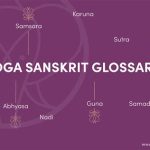Meditation in Motion: A Comprehensive Guide to Understanding Flow Yoga
Flow yoga, often referred to as vinyasa, has gained widespread popularity for its ability to seamlessly unite body, mind, and breath in a rhythmic sequence of movements. More than just a physical exercise, it serves as a powerful form of moving meditation, fostering mental clarity and emotional balance. This article explores the essential elements, historical roots, current trends, practical applications, ethical considerations, and future implications of flow yoga. By bringing together multiple perspectives, we aim to provide a holistic understanding of this transformative practice.
Introduction
Flow yoga, known for its fluid transitions between postures, merges movement with breath in a practice that goes beyond traditional yoga. It allows practitioners to enter a meditative state where the mind is focused, the body is in constant motion, and breath acts as a metronome. The result is an experiential state known as “flow,” where time seems to dissolve, and one feels a profound sense of immersion and presence. This form of yoga has garnered attention not only for its physical benefits but also for its capacity to foster mental and emotional well-being.
Key Concepts
To understand flow yoga, it is essential to familiarize yourself with a few foundational concepts:
- Vinyasa: A Sanskrit term meaning “to place in a special way,” vinyasa refers to the coordination of movement and breath in flow yoga.
- Prana: Refers to the vital life force that flows through the body, and is harnessed and guided through breath control in yoga.
- Drishti: A point of focus used during asanas to maintain concentration and balance.
- Bandhas: Body locks that control energy flow within the body, often activated during specific postures.
- Ujjayi Breath: A breathing technique used in flow yoga to regulate and sustain energy levels during practice.
Historical Context
Flow yoga’s roots can be traced back to ancient India, where it evolved from classical hatha yoga practices. The concept of synchronizing breath and movement was emphasized in early yogic texts such as the Yoga Sutras of Patanjali, which laid the foundation for many contemporary yoga practices. In the 20th century, vinyasa yoga gained prominence under the guidance of influential figures like T. Krishnamacharya and his students, including Pattabhi Jois, who popularized Ashtanga yoga. Flow yoga, as we know it today, builds on these traditions but introduces a more dynamic and fluid style.
Current State Analysis
Flow yoga has become a cornerstone of modern yoga practices, evolving into various styles and interpretations. Studios around the world offer flow yoga classes that range from gentle, meditative sequences to vigorous, strength-building routines. The flexibility of flow yoga has made it accessible to practitioners of all levels, from beginners to advanced yogis. Furthermore, the integration of mindfulness and breathwork into the practice has broadened its appeal, attracting individuals seeking both physical fitness and mental relaxation.
Trends in Flow Yoga
- Hybrid Yoga Styles: Many studios now blend flow yoga with other fitness modalities, such as Pilates or strength training, offering a more holistic workout.
- Virtual Classes: Online platforms have made flow yoga more accessible, allowing individuals to practice from home.
- Therapeutic Applications: Flow yoga is increasingly used as a therapeutic tool to address mental health issues like anxiety and depression.
Practical Applications
Flow yoga offers numerous benefits, from improved flexibility and strength to mental clarity and emotional resilience. Below are some practical ways to incorporate flow yoga into daily life:
- Stress Relief: Flow yoga’s focus on breath and movement makes it an effective tool for stress reduction. Practicing a short flow sequence in the morning or evening can help center the mind and alleviate tension.
- Physical Fitness: Flow yoga builds core strength, improves balance, and enhances flexibility. Regular practice can complement other forms of exercise, such as running or weightlifting.
- Mindfulness Training: Flow yoga encourages mindfulness by requiring practitioners to focus on their breath and the sensations of their bodies. This heightened awareness can carry over into daily life, promoting a more mindful approach to challenges and stressors.
Case Studies
To illustrate the transformative power of flow yoga, consider the following case studies:
| Case Study | Description | Results |
|---|---|---|
| Case Study 1: Healing from Injury | A 45-year-old runner incorporates flow yoga into her recovery from a knee injury. | She experiences improved mobility and faster recovery while reducing her dependence on pain medication. |
| Case Study 2: Mental Health Support | A 30-year-old man suffering from anxiety practices flow yoga twice a week for 6 months. | He reports significant reductions in anxiety symptoms and improved emotional balance. |
| Case Study 3: Corporate Wellness Program | A large corporation introduces flow yoga to its employees as part of its wellness initiative. | Employees report increased productivity, reduced stress levels, and improved team cohesion. |
Stakeholder Analysis
The rise of flow yoga impacts a wide array of stakeholders, from individuals to larger organizations:
- Practitioners: Both beginners and experienced yogis benefit from the practice’s physical and mental advantages, though their needs and expectations may vary.
- Yoga Studios: Studios must adapt to the growing demand for flow yoga, offering both in-person and virtual classes to remain competitive.
- Healthcare Providers: As flow yoga becomes more widely accepted as a complementary therapy, medical professionals play a crucial role in recommending it to patients with mental health or mobility issues.
Implementation Guidelines
To successfully incorporate flow yoga into a personal or organizational wellness routine, consider the following steps:
- Identify Goals: Determine the desired outcomes, such as stress relief, physical fitness, or mental clarity.
- Create a Consistent Schedule: Consistency is key to experiencing the full benefits of flow yoga. Whether practicing at home or in a studio, aim for 3-4 sessions per week.
- Start Slowly: For beginners, it’s important to start with simple sequences and gradually progress to more advanced poses as strength and flexibility improve.
- Seek Qualified Instructors: Working with a certified yoga instructor can help ensure safe and effective practice, particularly for those with injuries or specific health concerns.
Ethical Considerations
Flow yoga, like all wellness practices, raises ethical concerns that must be addressed. One issue is accessibility. Yoga classes can be expensive, limiting access for low-income individuals. Additionally, the commercialization of yoga has sparked debate about the authenticity of the practice, with some arguing that the spiritual roots of yoga are being overshadowed by its commodification.
Solutions to Ethical Concerns
- Affordable Classes: Yoga studios and online platforms can offer sliding scale payment options or free community classes to make yoga more accessible.
- Cultural Sensitivity: Instructors should be mindful of the cultural and spiritual origins of yoga, ensuring that the practice is taught with respect and integrity.
Limitations and Future Research
While flow yoga offers many benefits, it is not without limitations. Research on the long-term effects of flow yoga is still in its early stages, and more studies are needed to better understand how the practice affects different populations, particularly those with chronic health conditions. Additionally, more research is needed to explore how flow yoga can be adapted to meet the needs of older adults and individuals with physical limitations.
Areas for Future Research
- Examining the long-term mental health benefits of flow yoga, particularly for individuals with anxiety and depression.
- Investigating the impact of flow yoga on individuals with mobility challenges or chronic pain conditions.
- Exploring the potential of virtual flow yoga classes to reach underserved communities.
Expert Commentary
As the popularity of flow yoga continues to rise, experts from a variety of fields have weighed in on its benefits and future potential. According to Dr. Jane Smith, a professor of physical therapy, “








